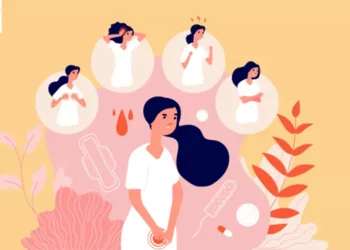Love is one of the most profound emotions we can experience. It can bring immense joy, fulfillment, and connection. But what exactly happens in our brains when we feel love? This article will explore the neuroscience of love, including the brain regions involved, the chemicals released, and how these processes impact our thoughts and behaviors. By understanding the science behind love, we can gain deeper insights into our relationships and emotional well-being.
The Nature of Love
Before diving into the brain’s processes, it is important to understand what love is. Love can take many forms, including romantic love, familial love, platonic love, and self-love. Each type of love has unique characteristics, but they all share common emotional and physiological components.
Types of Love
Romantic Love: This type of love often involves intense emotional and physical attraction. It can lead to passionate relationships and deep emotional bonds.
Familial Love: This love is characterized by deep affection and attachment to family members. It often includes feelings of loyalty and commitment.
Platonic Love: This type of love is based on friendship and emotional connection without romantic or sexual attraction.
Self-Love: This involves having a healthy regard for oneself. It is crucial for mental well-being and self-esteem.
The Brain Regions Involved in Love
When we experience love, several areas of the brain are activated. Understanding these regions helps us comprehend how love affects our thoughts and behaviors.
1. The Limbic System
The limbic system is often referred to as the emotional center of the brain. It plays a crucial role in processing emotions, including love. Key components of the limbic system involved in love include:
Amygdala: This almond-shaped structure processes emotions like fear and pleasure. It helps us respond to emotional stimuli and influences our feelings of attachment.
Hippocampus: This region is essential for forming memories. It helps us remember experiences related to love and emotional connections.
Hypothalamus: The hypothalamus regulates hormones and is involved in many bodily functions. It plays a role in the release of oxytocin and vasopressin, hormones linked to bonding and attachment.
2. The Reward System
The brain’s reward system is activated when we experience love. This system is responsible for feelings of pleasure and reinforcement. Key areas include:
Nucleus Accumbens: This region is associated with the pleasure response. When we feel love, the nucleus accumbens releases dopamine, a neurotransmitter that creates feelings of happiness and motivation.
Ventral Tegmental Area (VTA): The VTA is involved in the release of dopamine. It plays a significant role in the feelings of euphoria often associated with romantic love.
3. Prefrontal Cortex
The prefrontal cortex is responsible for decision-making, impulse control, and social behavior. When we are in love, this area helps us evaluate our feelings, make decisions about relationships, and control our emotions. It plays a role in how we express love and navigate social interactions.
The Role of Neurotransmitters and Hormones
When we feel love, our brains release various chemicals that influence our emotions and behaviors. Understanding these chemicals can provide insights into the experience of love.
1. Dopamine
Dopamine is often referred to as the “feel-good” neurotransmitter. It is released during pleasurable activities, including falling in love. This chemical creates feelings of happiness, excitement, and motivation. The surge of dopamine when we are in love can lead to intense feelings of joy and can even create a sense of euphoria.
2. Oxytocin
Oxytocin is known as the “bonding hormone” or “love hormone.” It is released during physical touch, such as hugging, kissing, or sexual intimacy. Oxytocin promotes feelings of trust, attachment, and emotional connection. It plays a significant role in forming strong bonds between partners, friends, and family members.
3. Vasopressin
Vasopressin is another hormone involved in bonding and attachment. It is released during intimate moments and is linked to feelings of loyalty and commitment. Vasopressin is particularly important in long-term relationships and can influence behaviors that promote connection and care.
4. Serotonin
Serotonin is a neurotransmitter that helps regulate mood, happiness, and overall well-being. When we are in love, serotonin levels can fluctuate. Early stages of love may lead to decreased serotonin levels, which can result in obsessive thoughts about the loved one. Over time, stable relationships may lead to balanced serotonin levels, contributing to overall happiness.
The Stages of Love and Brain Activity
Love is not a static experience; it evolves over time. Psychologists often describe different stages of love, each associated with specific brain activity and emotional experiences.
1. The Attraction Stage
The attraction stage is characterized by intense feelings of desire and infatuation. This stage is often marked by:
Increased Dopamine: The brain’s reward system is highly active, leading to feelings of excitement and pleasure. The release of dopamine creates a sense of euphoria and motivation to pursue the object of affection.
Decreased Serotonin: Lower serotonin levels can lead to obsessive thoughts about the person you are attracted to. This can create a sense of urgency and longing.
Physical Responses: During this stage, you may experience physical symptoms such as increased heart rate, sweating, and butterflies in your stomach. These responses are linked to the activation of the sympathetic nervous system.
2. The Attachment Stage
As relationships develop, they often transition into the attachment stage. This stage is characterized by deeper emotional bonds and feelings of security. Key features include:
Increased Oxytocin and Vasopressin: The release of these hormones promotes feelings of closeness and attachment. Physical intimacy, such as cuddling and sexual activity, enhances the release of oxytocin, strengthening emotional bonds.
Stability in Emotions: While the initial excitement may fade, a sense of comfort and stability emerges. The brain becomes accustomed to the presence of the partner, leading to a balanced emotional state.
Mutual Support: In this stage, partners often support each other emotionally and practically. This support reinforces the bond and strengthens the relationship.
3. The Long-Term Love Stage
Long-term love is characterized by deep emotional intimacy and commitment. This stage involves:
Sustained Release of Oxytocin: The continued release of oxytocin fosters trust and loyalty. Couples who have been together for a long time often report feeling a strong sense of partnership and companionship.
Balanced Neurotransmitter Levels: In long-term relationships, neurotransmitter levels stabilize, leading to a sense of contentment and happiness. Partners may experience fewer mood swings and a greater sense of overall well-being.
Shared Goals and Values: Long-term partners often develop shared goals and values, which further strengthens their bond. This shared sense of purpose can enhance feelings of love and commitment.
The Impact of Love on Mental Health
Love has a profound impact on mental health and emotional well-being. Understanding this connection can help us appreciate the importance of nurturing our relationships.
1. Reduced Stress
Being in a loving relationship can significantly reduce stress levels. The presence of a supportive partner can provide comfort during challenging times. The release of oxytocin during moments of intimacy and connection helps lower cortisol levels, the hormone associated with stress.
2. Increased Happiness
Love is associated with increased happiness and life satisfaction. The release of dopamine and other “feel-good” chemicals contributes to a positive mood. People in loving relationships often report higher levels of happiness and fulfillment.
3. Enhanced Resilience
Love can enhance resilience, allowing individuals to cope better with life’s challenges. The emotional support provided by a partner can help individuals navigate difficult situations and bounce back from adversity.
4. Improved Physical Health
Research has shown that people in loving relationships tend to have better physical health. The emotional support and companionship provided by a partner can lead to healthier lifestyle choices, such as regular exercise and a balanced diet. Additionally, the reduction in stress levels can have positive effects on cardiovascular health and overall well-being.
The Challenges of Love
While love can bring immense joy, it can also present challenges. Understanding these challenges can help us navigate relationships more effectively.
1. Jealousy and Insecurity
Feelings of jealousy and insecurity can arise in romantic relationships. These emotions can trigger the release of stress hormones, leading to anxiety and tension. Open communication and trust are essential for addressing these feelings.
2. Fear of Vulnerability
Opening up to someone and allowing yourself to be vulnerable can be daunting. The fear of rejection or betrayal can prevent individuals from fully embracing love. Building trust and fostering a safe emotional environment can help alleviate these fears.
3. Relationship Dynamics
As relationships evolve, dynamics can change. Factors such as life changes, stressors, and external pressures can impact the relationship. It is essential to maintain open communication and actively work on the relationship to navigate these changes.
Conclusion
Love is a complex and multifaceted emotion that profoundly affects our brains and bodies. Understanding what happens in our brains when we feel love can provide valuable insights into our relationships and emotional well-being. The activation of specific brain regions, the release of neurotransmitters and hormones, and the stages of love all contribute to our experiences of connection and intimacy.
Love has the power to enhance our mental and physical health, reduce stress, and increase happiness. However, it also presents challenges that require open communication and trust. By nurturing our relationships and understanding the science of love, we can foster deeper connections and lead more fulfilling lives. Ultimately, love is a fundamental human experience that enriches our lives and shapes our identities.
Related topics:



























